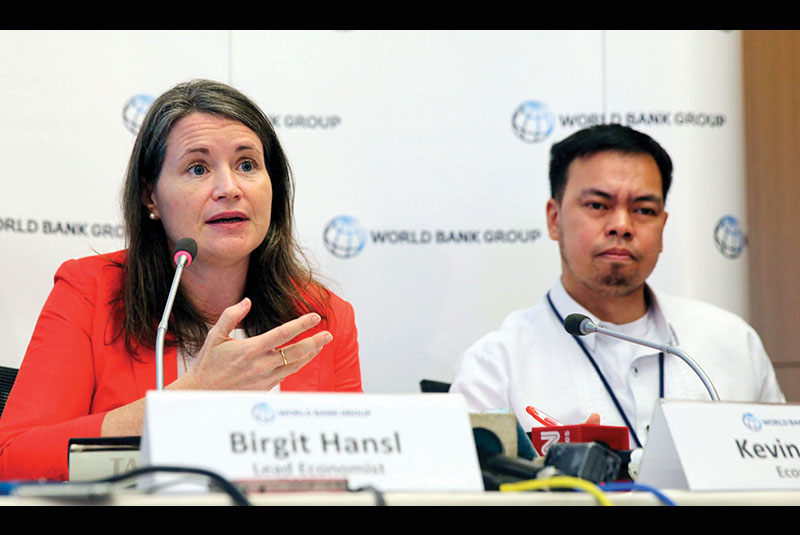World Bank retains 6.9% growth forecast for Philippines
MANILA, Philippines – The World Bank retained yesterday its 2017 growth projection of 6.9 percent for the Philippines but slightly revised downward its outlook for 2018.
The multilateral development bank said the domestic economy is likely to sustain a 6.9 percent growth in 2018 – down from its December projection of seven percent – and slightly easing to 6.8 percent in 2019.
In a briefing yesterday, World Bank lead economist for the Philippines Birgit Hansl said the downward adjustment in the 2018 growth projection took into consideration the external risks confronting the country and the performance of recent economic indicators.
“The revisions from the forecast in December is minor. Statistically, it’s insignificant. It’s just that we have more information now than last year. So as you can see, there is no major change. On the opposite, we see it as positive development,” she said.
The World Bank, in its Philippines Economic Update 2017, said the country will remain among the top performing economies in East Asia, supported by the government’s commitment to increase investments in public infrastructure development – seen to boost business and consumer confidence – as well as “substantial gains in employment and poverty reduction.”
“The World Bank continues to have a positive economic outlook for the Philippines that will be sustained throughout 2018. Infrastructure will have spillover effects in creating more jobs resulting to higher household consumption,” said Hansl.
In 2016, the economy proved resilient to external headwinds, growing 6.8 percent. Consumption remained robust due to low interest rates and expansion in consumer lending. Low inflation and a steady rise in remittance inflows also boosted household consumption.
Headway made in reducing poverty incidence in recent years is also expected to increase household consumption and quicken the pace of poverty reduction, said Hansl.
Unemployment fell to an historic low 4.7 percent in 2016 as 1.4 million jobs were created. Hansl noted, however, that the underemployment rate remains high at 18 percent and has remained unchanged in a decade, reflecting the prevalence of informality and poor quality of jobs.
Poverty incidence among Filipinos also fell to 21.6 percent in 2015 from 25.2 percent in 2012. This represents 1.8 million Filipinos lifted out of poverty within three years.Higher employment, low inflation and improved incomes lowered the poverty incidence, said Hansl.
The country’s growth prospects, however, are exposed to several risks. On the external front, rising global interest rates could weaken the peso and drive up domestic inflation.
Source: http://www.philstar.com/business/2017/04/12/1689889/world-bank-retains-6.9-growth-forecast-philippines


 English
English




